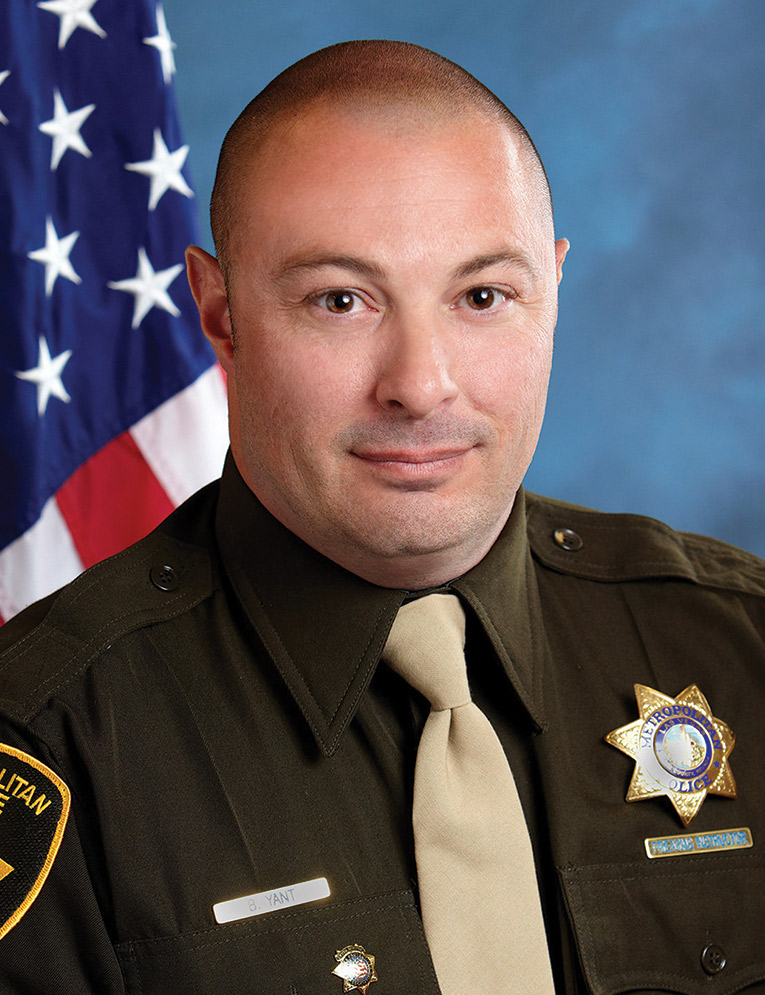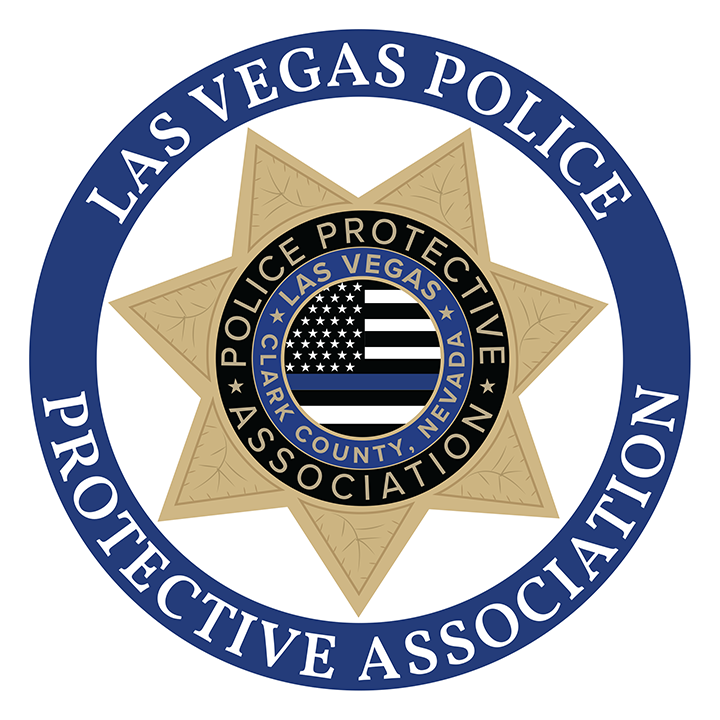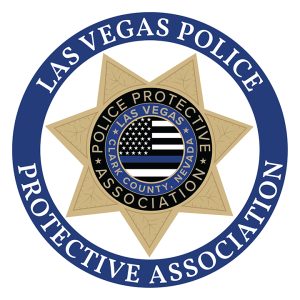
Sergeant-at-Arms
LVMPD was one of the first major police departments in the country to implement the use of body-worn cameras. The rollout began as a trial period in conjunction with a case study. Officers were asked to volunteer to wear and try out several types of body-worn cameras. At the end of the trial period and case study, it was clear that body-worn cameras were going to be implemented in policing and that they were a very valuable tool. During contract negotiations, the LVPPA team worked very hard with LVMPD to negotiate the implementation and usage of the body-worn cameras, and policies and procedures relating to the body-worn camera rollout through the uniform ranks. Shortly after the contract was settled, the Nevada Legislature passed a state law requiring all uniformed police officers to wear a body camera during the course of their duties.
There have been several revisions to the body-worn camera policy. In the initial stages of the rollout, as with any tool, muscle memory, repetitive use and practice using the body-worn camera were key. Officers did not have familiarity with the policy and equipment, and compliancy with body-worn camera activation and use took time. Now, with policy streamlined and officers familiar with the body-worn camera, compliancy and usage throughout the Department is extremely high. The intent of LVMPD and its policy has always been that every officer wearing a body camera will have their camera activated and on, recording their citizen interactions while documenting the event in its entirety.
Below is the current LVMPD policy on activation requirements.
Officers will record in the following circumstances and inform individuals that they are being recorded as soon as it is safe to do so:
-
- All calls for service involving contact with citizens or suspects;
- Officer-initiated activities (e.g., vehicle and person stops);
- Any citizen contact that becomes adversarial;
- Witness, victim, and suspect interviews including Miranda Warning and post-Miranda contact;
- Detentions or investigations pursuant to an arrest;
- Searches of persons, structures, or vehicles;
- While transporting prisoners;
- After the occurrence of an officer-involved traffic accident;
- When third party-sourced video is shown to officers and officers believe that the video may be deleted or lost as evidence, officers are encouraged to record that video (e.g., business-owned video or domestic violence investigations); however, consent must be granted;
- When driving Code 3;
a. SWAT officers will activate their camera once arrived. - Any involvement that meets the criteria of a pursuit in policy, or any attempts to contain or locate a subject who has fled from officers whether on foot or in a vehicle (including primary, secondary, or any additional officer who is responding to, or participating in, the pursuit. This also includes “bubbling” or “paralleling” tactics). See LVMPD 6/014.00, Vehicular Pursuit and LVMPD 5/212.05, Foot Pursuits);
- When field testing narcotics, counting seized money, or documenting high value property;
- K9, Traffic, and resident officers responding to calls for service will activate their BWC when they are within two (2) miles of arrival (or at all times when driving Code 3).
Below is the current LVMPD policy on deactivation requirements.
To ensure the details of an evolving incident have been captured on BWC, officers will continue recording until:
- They have cleared from the scene and are no longer assigned to the event;
- They have discontinued contact with (and are no longer in proximity to) the subject(s). Officers will deactivate their BWC on static crime scenes where investigative units have arrived or when directed by a supervisor. All other officers assigned to other responsibilities related to the event will have their BWC activated until advised by a supervisor. Officers will not record briefings with investigative units or activities at command posts. The decision to deactivate a BWC will be stated prior to deactivation.
The following are examples of when an officer may exercise discretion:
-
- A citizen has requested the officer stop recording. Officers have no obligation to stop recording in response to a citizen’s request if the recording is pursuant to police activities unless:
a. A citizen with standing has requested the officer stop recording within the citizen’s premises, and the officer has entered the premises on consent. As a rule, if an officer must legally ask permission to enter the premises, a citizen may put conditions on the officer’s entry, such as deactivation of the BWC. - If a victim or witness requests not to be recorded, officers should consider the request.
- Officers should be mindful of locations such as places of worship, certain areas in hospitals or clinics, law offices, and day care facilities, where recording may be considered inappropriate, or prohibited by privacy policies.
- The officer is completing a report while removed from public contact. If at any point citizen contact will occur, the BWC will be reactivated.
- The officer is participating in informal, non-enforcement-related contact with the public (e.g., First Tuesday, Coffee with a Cop, etc.).
- A citizen has requested the officer stop recording. Officers have no obligation to stop recording in response to a citizen’s request if the recording is pursuant to police activities unless:
As you see from the activation requirements, once you are assigned to a call or self-initiate to an event, you must activate your camera and keep it on during the duration of the event. Recently we have seen many instances where, once officers have been assigned to the event, they have activated their camera per policy. However, after activating the camera, they have deactivated the camera and continued to drive to the event. In some instances, officers would preplan and talk about the event with their partner or trainee and their cameras would both be deactivated. This is exactly what the department and CIRT want captured. We have had officers deactivate their cameras during the drive to the call, and when they arrived on the call they forgot to reactivate the camera. One perfect example is an officer who was driving to a call at night with his camera activated. The officer got into an accident en route to the call and ultimately was sent to the collision review board. After being labeled at fault, during the review the officer was no longer labeled at fault because of the body-worn camera footage and was not disciplined for the accident.
Currently, in several states there is legislation being heard regarding body-worn cameras. In Colorado, which happens to be one of the first states to remove qualified immunity, they are hearing bills regarding body camera compliancy. If an officer is involved in a use of force and fails to have their body-worn camera activated, their POST certification would be removed for a year. If an officer is involved in a deadly use of force and fails to have their body-worn camera activated, their POST certification would be removed for life. Imagine that, a policy-compliant and legal use of force and an accidental failure to have your camera activated, and your ability to perform your job could be stripped for a year or life! Body-worn camera activation and compliancy are key, and as we have seen here with LVMPD, the camera footage is overwhelmingly telling the truth and clearing officers of claims of misconduct. Yes, the camera may catch you speeding, cussing or any other minor issue. We are human and will sometimes make errors. If your camera is not activated, it cannot tell your story.

